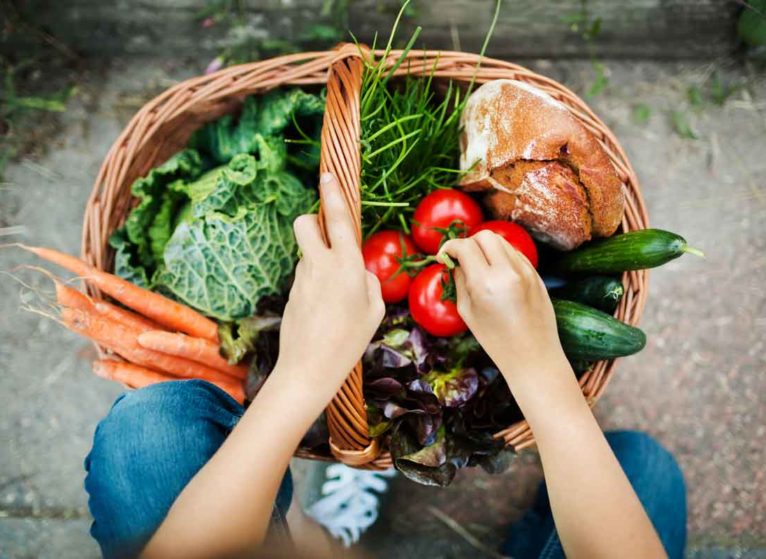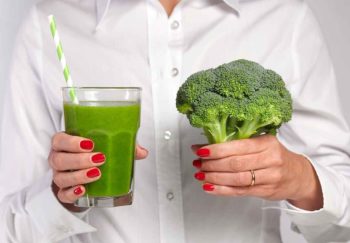On the surface, the clean eating diet sounds like a good idea. But like any fad diet, it has drawbacks. Taken to the extreme, it can even be dangerous. We turned to a registered dietitian to weigh in on the clean eating diet craze. Carole Havrila shares the good, the bad, and the ugly.
What Is Clean Eating?
The clean eating diet is difficult to define. It means different things to different people. But basically, it means:
- Eating whole, natural foods
- Avoiding refined and processed foods (nothing boxed or packaged)
- Avoiding artificial ingredients such as certain preservatives and additives.
Clean eating isn’t a new concept and there’s a good side to eating foods in their natural state.
But Havrila worries that some people take it to the extreme.
She says, “I remember clean eating being around 12 years ago. But now it’s everywhere. And some people are out there selling it and they're just militant about it. People get wrapped up in it and develop this attitude of, ‘If you don't eat this way, then there's something wrong with you.’”
Dark Side of Clean Eating Diet
When taken to an extreme, a clean eating diet can be dangerous.
“It can become quite obsessive. People may avoid entire food groups,” Havrila says. This can lead to:
- Vitamin and mineral deficiencies
- Not getting enough protein
- Not getting enough carbohydrates (providing most of the energy the body needs)
“For some people, a clean eating diet becomes an obsession,” Havrila says. “They’ll say, ‘I never use any added sugar. I never eat any red meat. I never have any alcohol. It's all or nothing.’”
She adds, “All of those things, in moderation, can be part of a healthy diet. It doesn't have to be all or nothing.”
Clean Eating: Not the Answer to Lasting Weight Loss
Touted by celebrities as a quick way to lose weight, the clean eating diet will likely backfire. Kim Kardashian used a clean eating diet to lose a lot of weight in the weeks before the Met Gala. But it was never meant to be a long-term lifestyle.
“One of the dangers of the extreme side of clean diets is how overly restrictive they are. Nobody can maintain them,” Havrila says.
Growing Produce Without Pesticides
A UVA chemical engineer has created an alternative to pesticides. Read more.
Good Side of Clean Eating Diet
A healthier approach to eating clean is enjoying all foods in moderation, Havrila says. And following guidelines promoted by the American Institute for Cancer Research or the American Heart Association (AHA). Whether eating at home, in a fast-food restaurant, or with a meal prep kit — a heart-healthy diet looks like this, according to the AHA:
- Eat a variety of fruits and vegetables
- Choose whole grains rather than refined grain products
- Choose healthy sources of proteins — mostly from plants — and regularly eat seafood and fish and leaner cuts of meat
- Use liquid plant oils (olive, corn, canola, safflower) in place of tropical oils and animal fats (butter)
- Choose minimally processed over ultra-processed foods
- Enjoy foods with little or no salt
- Minimize foods and beverages with added sugar
- Limit alcohol if you drink it already; don’t start if you aren’t drinking
“The healthier way to eat is not to go on the latest fad diet,” Havrila says. Importantly, too, a healthy diet can include a once-in-a-while treat: a cupcake on a birthday, glass of champagne to celebrate a special occasion, and yes, even grandma’s marshmallow-topped sweet potatoes over the holidays.
What’s not healthy, Havrila says, is thinking of some food groups as “dirty.”
Need a Diet Guru?
A UVA Health registered dietitian can help you manage obesity, cancer, or other diseases.
Best Way to Clean Your Fruits & Vegetables
Most fruits and vegetables come with small amounts of harmful pesticides. Here’s how to clean them before eating. “Just rinse your fruits and vegetables well for a solid minute,” Havrila says. “Research tells us that the washes you can buy do nothing more than tap water.”
Also, use a brush to scrub apples and other produce with skins you’ll eat.
You don’t need to worry about buying organic.
Havrila explains: “There's not much data out there that tells us that organic foods give us more vitamins or minerals. You get the same health benefits — whether organic or not — by just eating fruits and vegetables and washing them well.”


